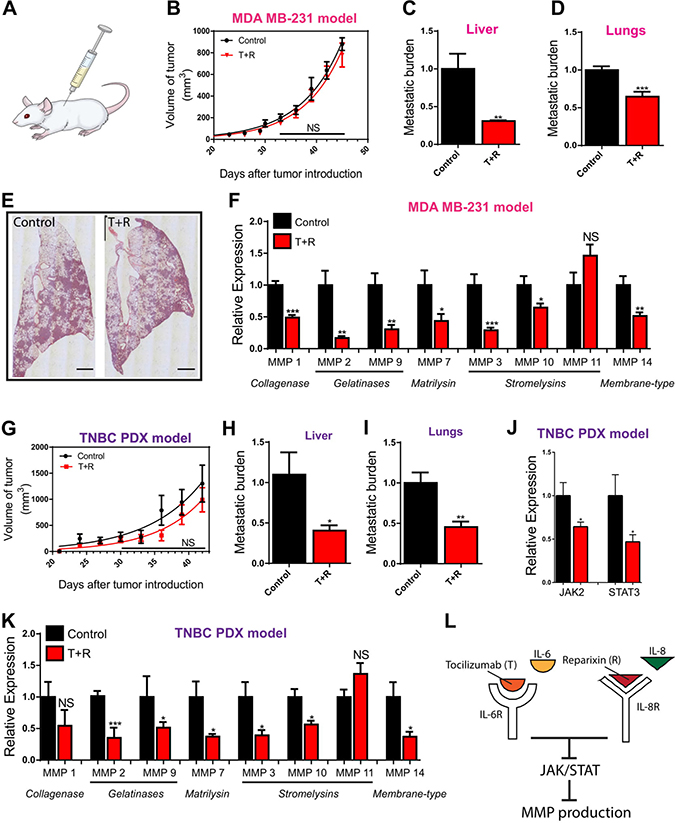The cover for issue 66 of Oncotarget features Figure 4, "RNA sequencing of PDX tumors," by Jayatilaka, et al.
Cancer cell density changes dramatically during the early growth of a primary tumor and during the early seeding steps of secondary tumors and has been implicated in playing an important role in regulating metastasis and drug resistance. Local tumor cell density also plays a role in the responsiveness of cells to matrix metalloproteinases inhibitors, such as Batimastat, Marimastat, Bryostatin I, and Cipemastat, where different migratory phenotypes are observed in low and high cell density conditions.
Dr. Denis Wirtz from the Department of Chemical and Biomolecular Engineering, The Johns Hopkins University, Baltimore, MD, USA, the Johns Hopkins Physical Sciences-Oncology Center, The Johns Hopkins University, Baltimore, MD, USA and Department of Oncology and Department of Pathology, Johns Hopkins University School of Medicine, Baltimore, MD, USA as well as Dr. Hasini Jayatilaka from the Department of Chemical and Biomolecular Engineering, The Johns Hopkins University, Baltimore, MD, USA, the Johns Hopkins Physical Sciences-Oncology Center, The Johns Hopkins University, Baltimore, MD, USA and the Department of Pediatrics, Bass Center for Childhood Cancer, Stanford University, Stanford, CA, USA said, "Matrix metalloproteinases form a family of metzincin proteases that contribute to the degradation of extracellular-matrix proteins and remodeling of the basement membrane."

Figure 4: RNA sequencing of PDX tumors. (A) Representative immunohistochemical staining with MMP1, MMP3, MMP7, and MMP9 demonstrate decreased expression in the tumors obtained from mice treated with T+R. Scale bar, 100 μm. (B–E) Decreased protein expression of MMP1, MMP3, MMP7, and MMP9 in the PDX tumors obtained from mice treated with T+R (F) Principle component analysis (PCA) of the top 1,000 most significant genes (G and E) Heat map demonstrating MMPs and TIMPs upregulated/downregulated (Log2FC) following treatment with a combination of tocilizumab and reparixin.
Considering the individual influence of IL-6 and IL-8 on the regulation of MMP expression and the role STAT3 plays in driving metastasis and drug resistance, the research team speculated that different subgroups of MMPs - such as collagenase, gelatinase, matrilysin, stromelysin, and membrane-type - could be regulated by tumor cell density through the synergistic signaling of IL-6 and IL-8. As tumor cells proliferate and local cell density increases, the mRNA expression of MMPs also increases. They demonstrate that the protein expression of MMP 1, MMP 2, MMP 3, and MMP 9 are also upregulated in high cell density conditions. These inhibitors have little-to-no effect on cell migration at a low cell density, but do significantly decrease cell speed at a high density, suggesting an influence of cell density on the responsiveness of cells to MMPIs. These findings provide new fundamental insights into the expression of MMPs and suggest a novel strategy to reduce the expression and activity of MMPs, decrease the metastatic capacity of tumor cells.
The Denis Wirtz/Hasini Jayatilaka research team concluded, "This study provides new insights into the regulation of MMP expression in tumor cells."
Full text - https://doi.org/10.18632/oncotarget.25863
Correspondence to - Denis Wirtz - [email protected] and Hasini Jayatilaka - [email protected]
Keywords - cell migration, matrix metalloproteinases, interleukin 6, interleukin 8


